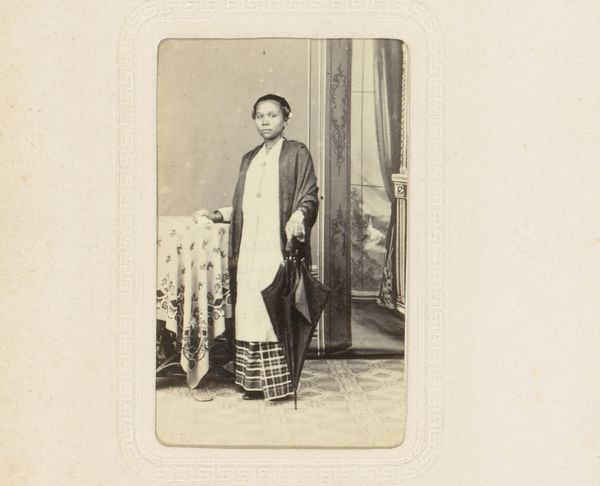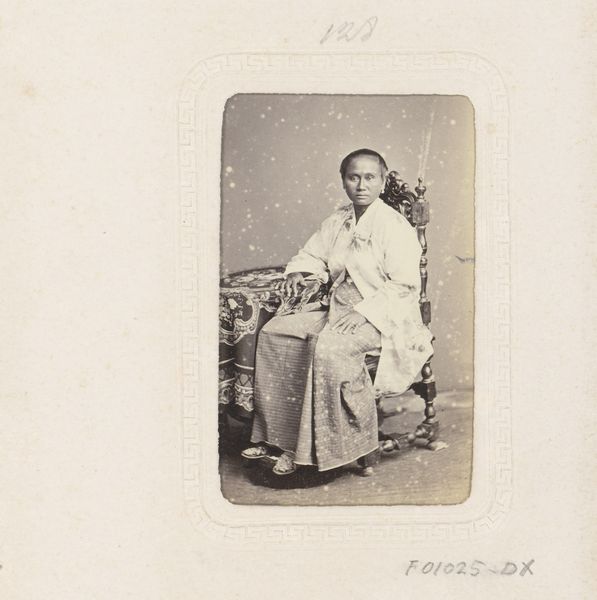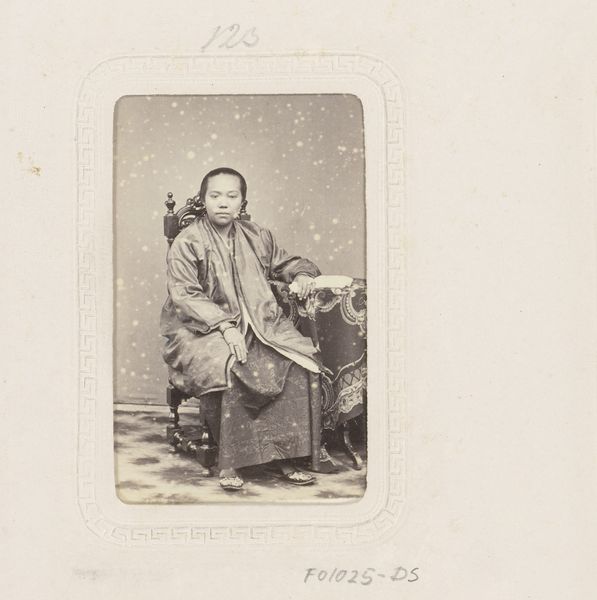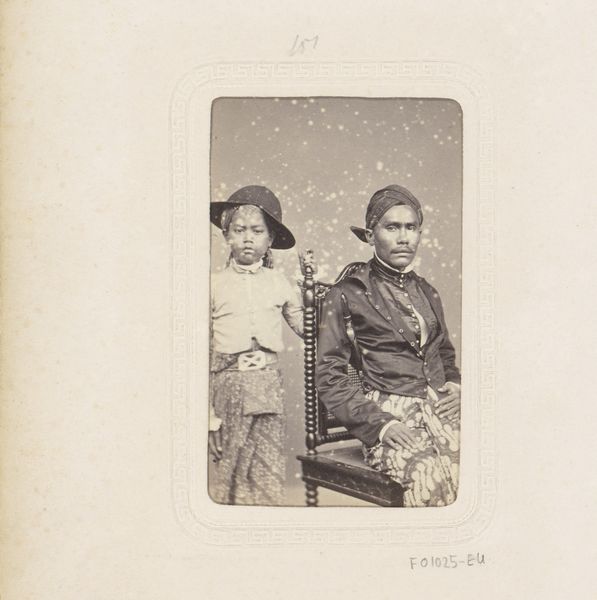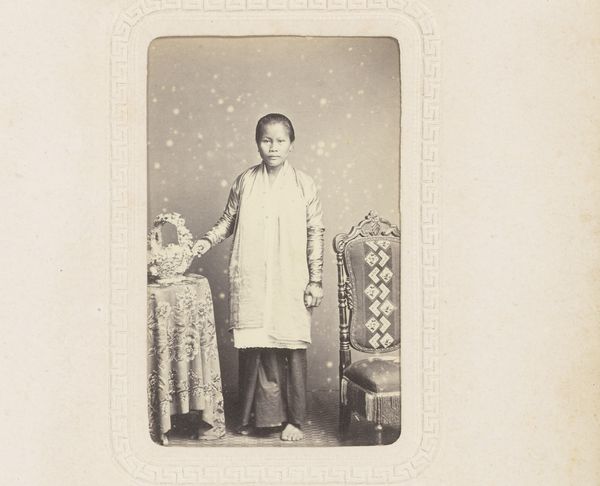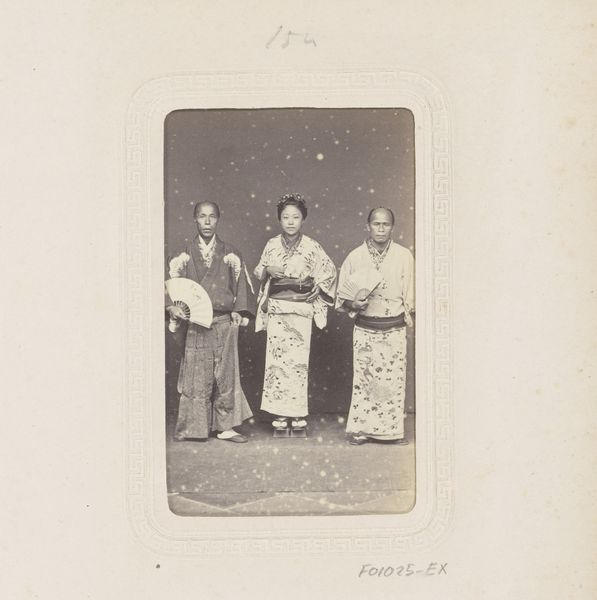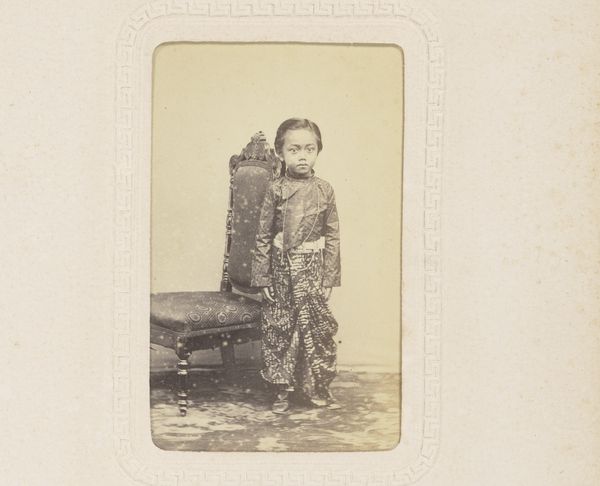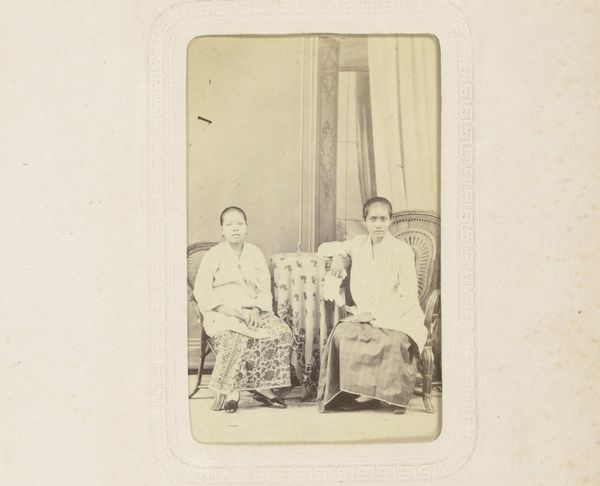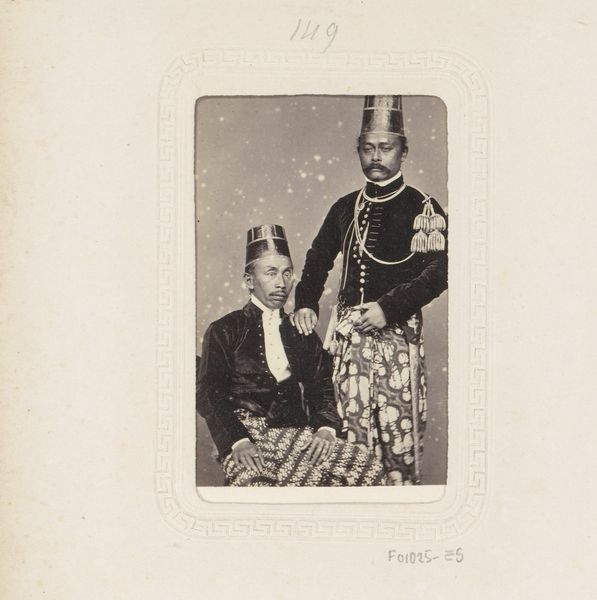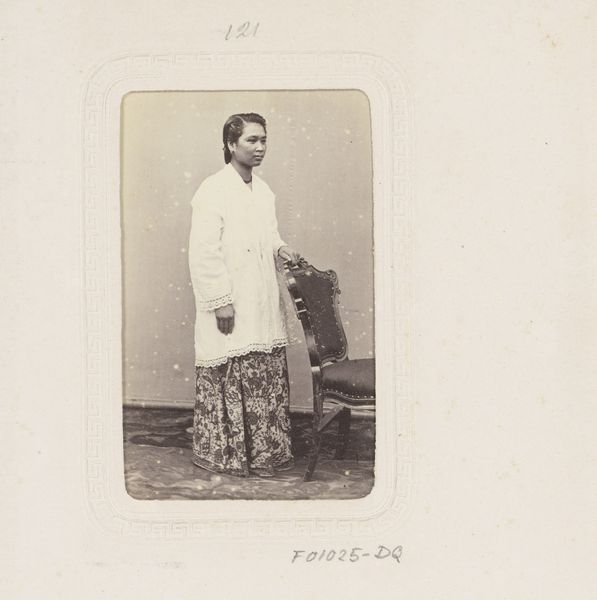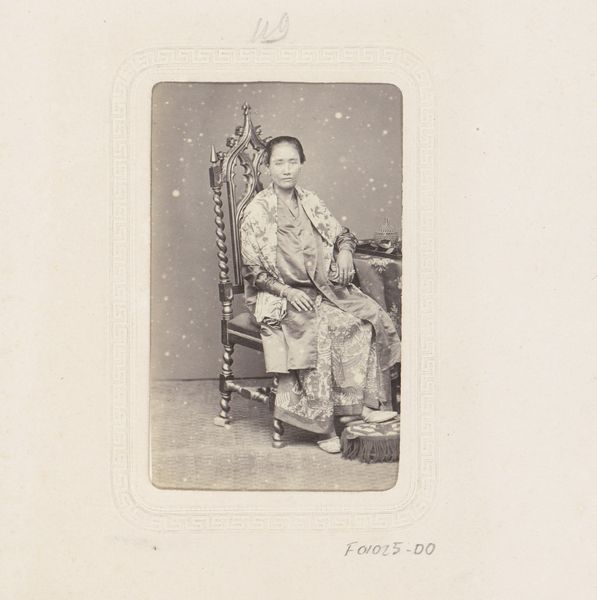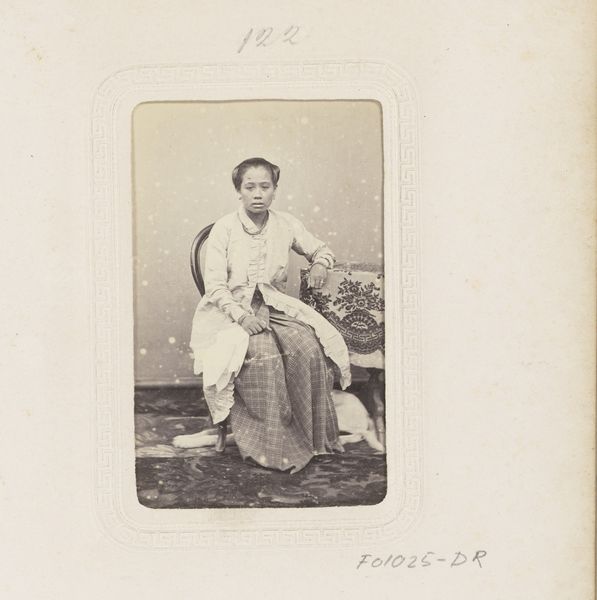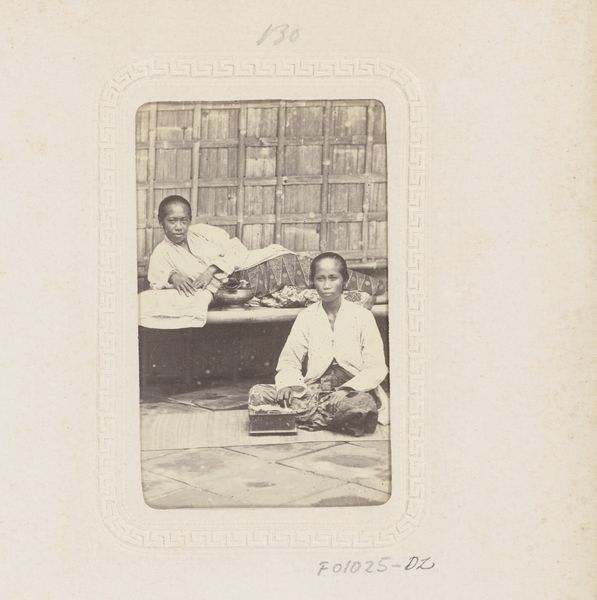
photography, gelatin-silver-print
#
portrait
#
asian-art
#
archive photography
#
photography
#
historical photography
#
gelatin-silver-print
Dimensions: height 85 mm, height 52 mm
Copyright: Rijks Museum: Open Domain
Curator: This gelatin-silver print, dating roughly between 1857 and 1880, presents a group portrait of a family. The studio, Woodbury & Page, specialized in portraiture within Asian communities. What are your immediate impressions? Editor: An air of solemnity hangs over this photograph, wouldn't you say? The three subjects gaze forward, unsmiling, almost as if aware of the photographic act as a moment of profound significance. Curator: Absolutely. Consider that photographic technology was still relatively new. These formal studio portraits represented considerable investment, both financially and in terms of social capital. It was a declaration of status and belonging. The careful attire is evidence of this: observe the detail on their traditional clothing. Editor: Precisely. We need to consider questions of power and representation. Who had the ability to be visible and on what terms? In this carefully staged composition, each garment choice speaks volumes about the family's identity and possibly their social aspirations. The very act of being photographed solidified certain positions in the colonial environment. Curator: The details in the clothing, like the embroidery on the woman's collar, or the design on the child's cap, tell a visual story of cultural identity being consciously preserved, likely against a backdrop of rapid societal change. What are your thoughts about how families in particular engaged with emerging modernity? Editor: The inclusion of the child, positioned centrally, strikes me as significant. This symbolizes, not only the continuation of lineage, but potentially also a vision for the future amid profound cultural shifts. This photograph exists as an archive, speaking about what a family in Asia valued at this historical juncture, given the complexities of trade and colonial legacies. Curator: Agreed. There’s a certain quiet power in that carefully constructed stillness. They aren't passive subjects. Editor: It forces me to consider who this image was for. Was it primarily for the family themselves, or did it also circulate within a European context? The way we view these images now also brings in the discourse on colonial-era images and how we, as a society, re-contextualize such photography. Curator: Reflecting on the work now, it stands as a potent document of self-representation during a transformative era. Editor: A visual record, and also, a reminder of the selective narratives history tends to amplify, encouraging us to explore the fuller picture beyond initial appearances.
Comments
No comments
Be the first to comment and join the conversation on the ultimate creative platform.
